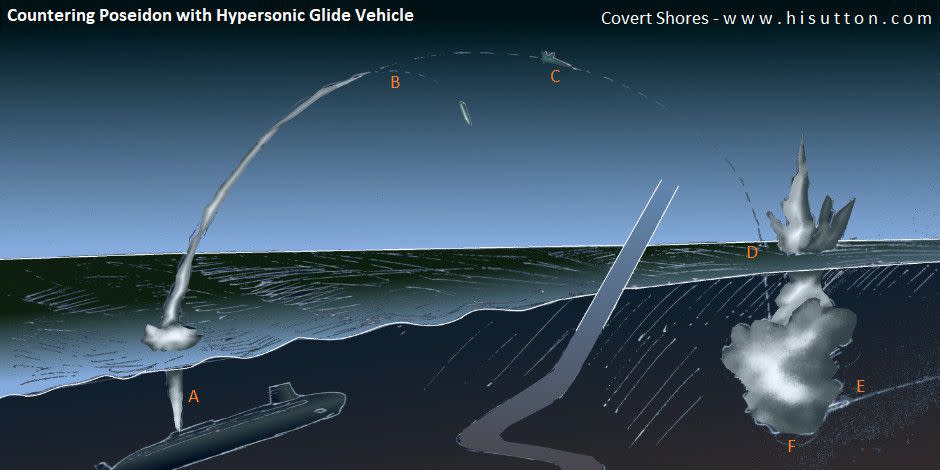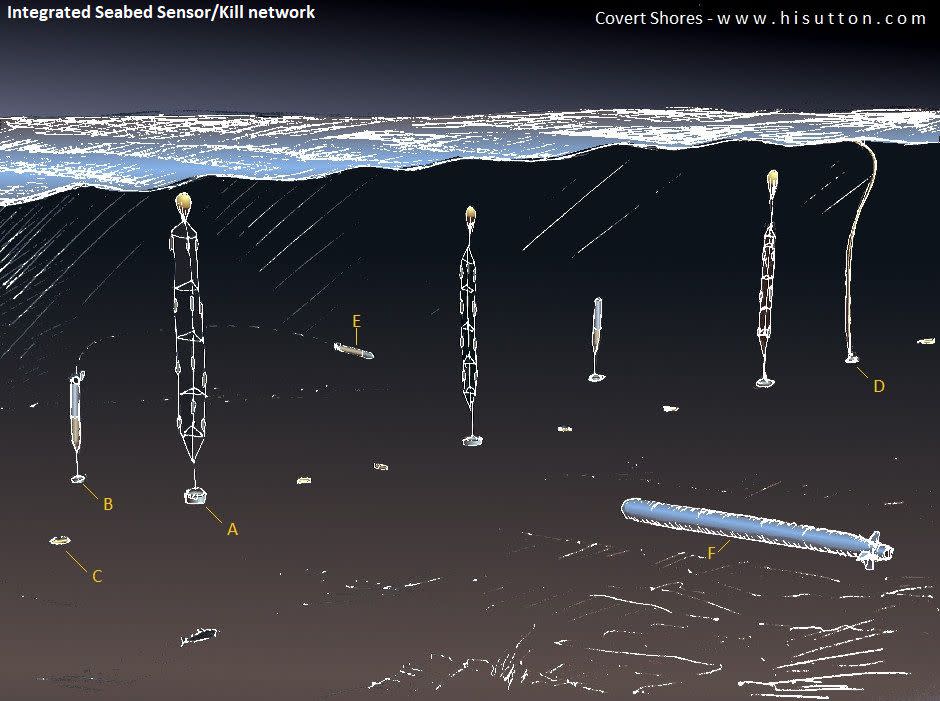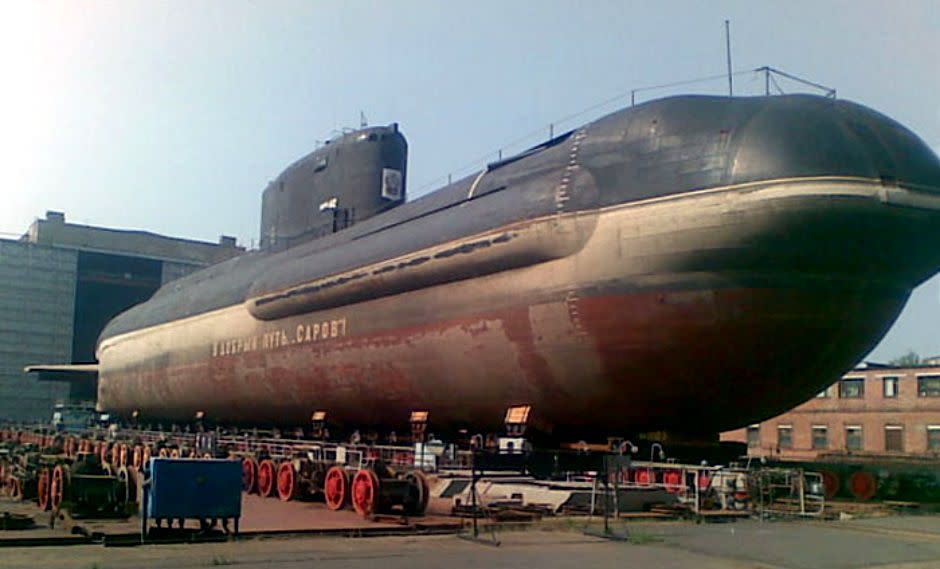How Can We Stop Russia’s Apocalypse Nuke Torpedo?

The world is still processing the sheer awfulness of Russia’s new Poseidon long range torpedo. The multi-megaton weapon, like something from a science fiction film, is designed to attack coastal targets, creating radioactive tsunamis and rendering entire regions uninhabitable. Once thought a possible hoax, we now know Poseidon is very real, prompting the question: How do you stop it?

Poseidon was first noticed outside of western intelligence in November 2015, when a picture of it was “accidentally” shown on Russian state television. The weapon is 65 feet long and 6.5 feet wide. Nuclear powered, it can travel thousands of miles at speeds of up to 70 knots. Poseidon’s thermonuclear warhead is designed to destroy coastal locations such as ports, cities, and economic infrastructure. The resulting explosion would create tsunamis of radioactive water and debris, carrying the devastation farther inland and rendering large areas unlivable for generations.
The sheer destructive potential of Poseidon-the thermonuclear warhead is variously estimated at 2 to 100 megatons-means a torpedo attack must be stopped at all costs. An attack on New York City, for example, would kill at least 2.5 million people outright, injure another 5 million more, and spread radiation as far north as Quebec.
“Poseidon was met with a measure of incredulity when first revealed but it is now accepted fact that Russia has been testing the new weapon and is building the submarines which will launch it,” Undersea warfare authority H.I. Sutton told Popular Mechanics. Sutton, the author of World Submarines: Covert Shores Recognition Guide and the Covert Shores web site, has written extensively on Poseidon. “So the question shifts from 'Is it real?' to 'How can we defend against it?'”
According to Sutton, Poseidon will be a challenging target. “Poseidon is fast and can dive deeper than regular submarines. Fortunately it is likely to be noisy enough that well positioned sensors will be able to detect it. The problem will be how to actually neutralize it. New weapons will need to be developed.”
Sutton says stopping Poseidon won’t be easy. “I have a problem with people over-simplifying the solution; it's tempting to believe that NATO can *just* drop a nuclear depth charge in front of it.” Sutton says. “But you don't *just* do anything in underwater warfare, everything is difficult and every new capability costs a lot of money to develop and deploy.” Sutton proposes several countermeasures to halt Poseidon dead in its tracks.

The first is a network of both fixed and air-droppable underwater hydrophone arrays, much like the Cold War’s SOSUS network, to listen for signs of an approaching Poseidon. These listening posts would have their own torpedo mines-encapsulated homing torpedoes anchored to the seabed and launched on command-to intercept the apocalypse torpedo.
Poseidon is such a dangerous weapon that multiple options will probably be necessary to ensure stopping an attack. Sutton believes that hypersonic weapons launched from Virginia-class submarines could provide a speedy means of intercepting a Poseidon. Traveling at speeds in excess of Mach 5, a hypersonic weapon could act quickly on a Poseidon sighting. The Poseidon’s high speed should also prompt the development of a new generation of western torpedoes. Future heavyweight torpedoes could carry payloads of multiple smaller torpedoes. After all, Poseidon itself is smaller than a conventional submarine and wouldn’t need much of an explosive charge against its hull to neutralize it, and the more hunters hunting the better.

Stopping Poseidon would also mean going after the launch platforms, and when it enters service in 2027 the giant torpedo will be carried by at least two submarines, the Sarov and Belgorod. Sutton warns that complicating matters, “Poseidon could be launched from under the ice cap, making the launch platform harder to neutralize before launch.” The U.S. Navy’s three Seawolf-class nuclear attack submarines, designed to operate under pack ice, will be especially suited to destroy these Russian submarines before they can launch their torpedoes.
One system that won’t work against Poseidon? Existing U.S. and NATO missile defenses and proposed space-based defenses. “The Poseidon nuclear torpedo is likely a response to missile defenses. The development of space based missile defense might not have been on their radar when they started development twenty years ago, but Poseidon will be immune to that also.”
A nuclear war is bad enough, but Poseidon turns the awful knob to 11 and breaks it off. It is not an invincible weapon and can be stopped-with the right tech.
('You Might Also Like',)

